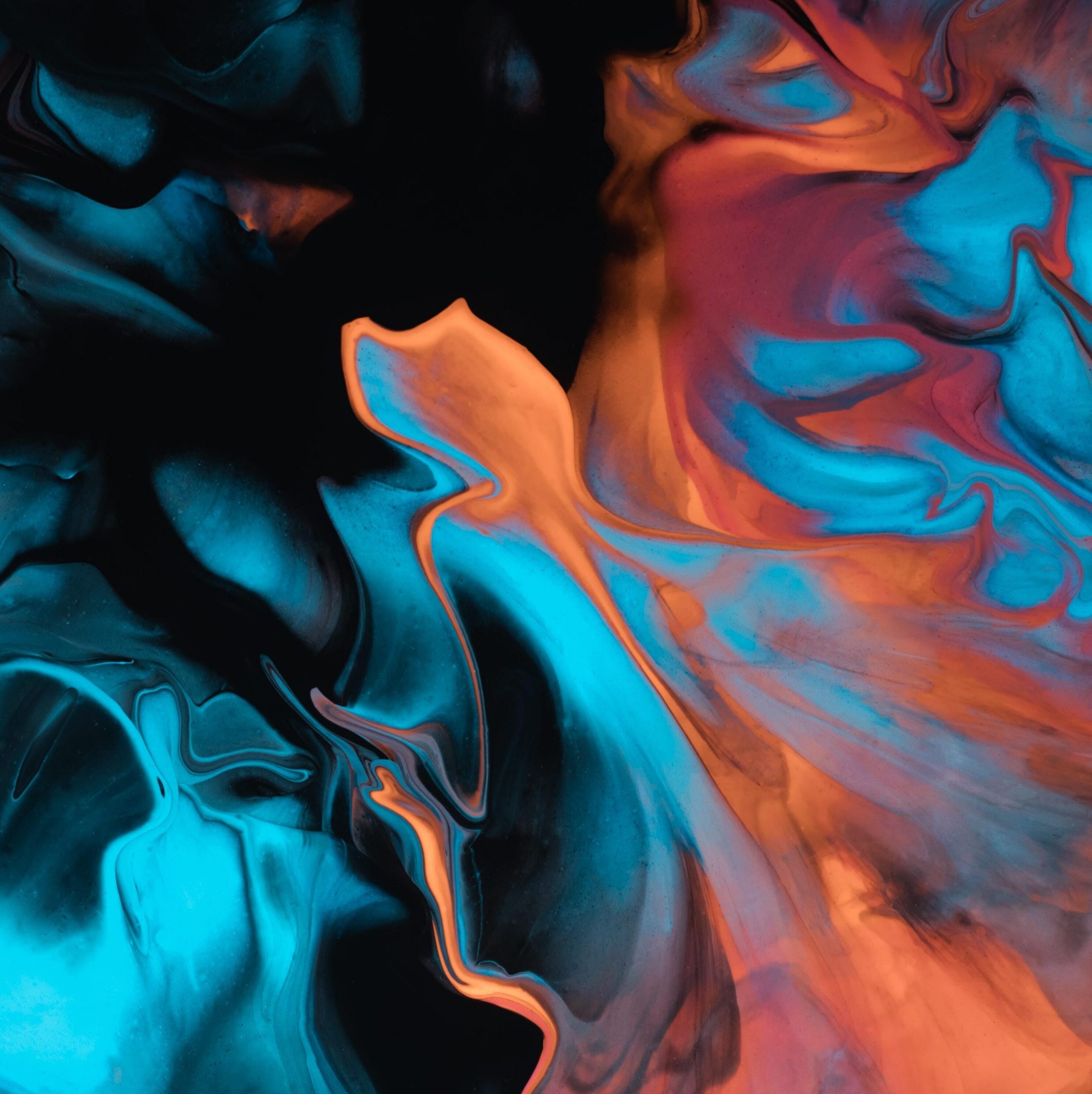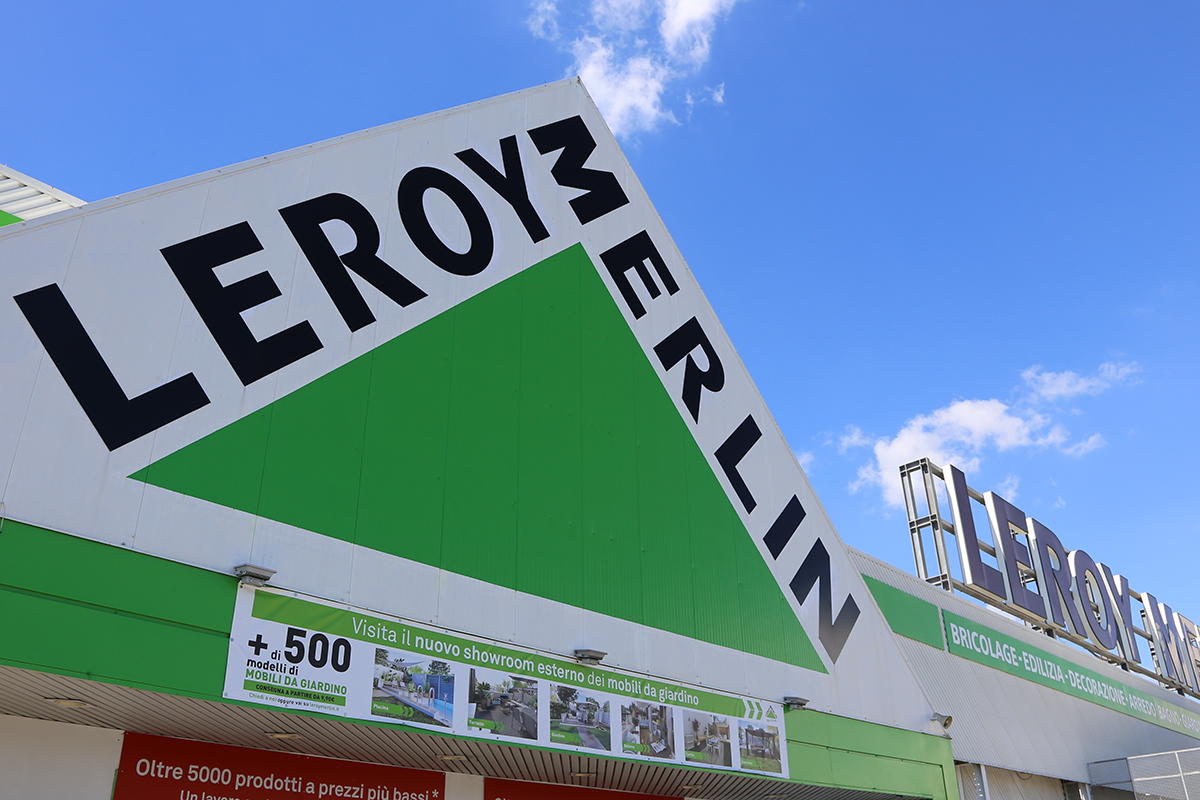Augmented Reality is able to break down the brakes on purchases and increase sales, collaborating synergistically with physical stores.
Augmented Reality and try-before-you-buy
The new role of retail
Retail has been experiencing a profound revolution in recent years, stores from simple spaces where consumers buy goods are now proposed as places full of meaning. The cliché of the contrast between offline sales and online sales has disappeared, now each of these channels plays its own decisive role contributing to company performance.
Physical stores have fundamental tasks within the customer journey, they allow customers to live experiences, to get more information, to learn, to get in touch with the identity of the company. An example? Our project for Ikea.
Together with Leroy Merlin, large-scale retail trade in DIY, gardening and much more, present in twelve Italian regions with a total of 48 stores, we have explored new solutions to bring services for consumers real needs.
Leroy Merlin already had a clear and complete model of the customer journey, drawn up by multiple figures within it and that we decided to further investigate by interviewing the employees of the Verona store. Listening and empathy are often underestimated but to identify new effective solutions it is essential to have an information framework full of details and able to capture all the issues that often prove decisive in human relationships (and therefore seller-customer).
We observed the processes in the floors and walls department, where Leroy Merlin believed there were stages in the sales process that needed improvement.
Therefore, the reasons why some buyers slowed down or even gave up on the purchase were identified, two in our opinion very relevant:
- consumers must choose and buy materials before knowing the visual impact they will have on their homes, on existing walls and floors;
- the use of samples however does not allow to accurately imagine the yield in the entire room; many of the customers struggling with the choice of floors, however, wonder if the effect in their homes will be the same given that the lighting conditions are profoundly different than those of a Leroy Merlin store.
Start with the concept
We asked ourselves if the use of Augmented Reality could allow consumers to evaluate the purchase more precisely and, therefore, reduce the brakes on the purchase of materials for flooring and coverings.
A further element to pay attention to was the behavior of the customers in the stores and their expectations. In fact, many of the people who go to the shops need to touch the materials, walk among the physical samples and have time to reflect on them. These are the aspects that contribute to making sense of the experience in retail.
So, an entirely digital product risked not being the solution to the pain of customers, on the contrary, it risked increasing their frustrations.
The goal of our exploration was therefore to identify tools that would give customers all the knowledge and all the information for a conscious choice, even before interacting with a sales employee or even even before entering a shop.
So we have prototyped an app that thanks to Augmented Reality offers prospects a punctual and complete look at their purchases, by previewing the rendering of materials in their premises. In doing so, when they arrive at the store, they have much clearer ideas.
To engage users and receive their feedback, a survey was dedicated to the new digital product.
Designing the app and the User Experience
For many users it may be the first experience with an Augmented Reality app, therefore it is essential to offer a guide on first access. Simple instructions with icons and illustrated paths can prove successful and increase the audience of users.
The first guided access allows users to understand how to use the elements of the UI, understand which they can interact with and where each interaction leads. We imagined the context of use and used taps, horizontal and vertical swipes that made the experience as natural and fluid as possible.The in-app experience must also be credible, so it reflects user expectations and convey the concepts initially identified, therefore:
- the Augmented Reality experience returns objects perfectly dropped into reality, with a realistic effect due to the extraordinary rendering of light on the surfaces and the effective positioning of the objects in the surrounding environment;
- colors, texts and fonts complete the experience, giving shape to the concepts summarized in the exploration and conception phase. Therefore an electric blue was chosen as the accent color because it conveys concepts such as energy, action and reliability, the contrast of the texts is very accentuated and the important info are shown on semi-transparent backgrounds to improve readability, the Inter font was chosen for its specificity, very suitable for screens of any type of device.
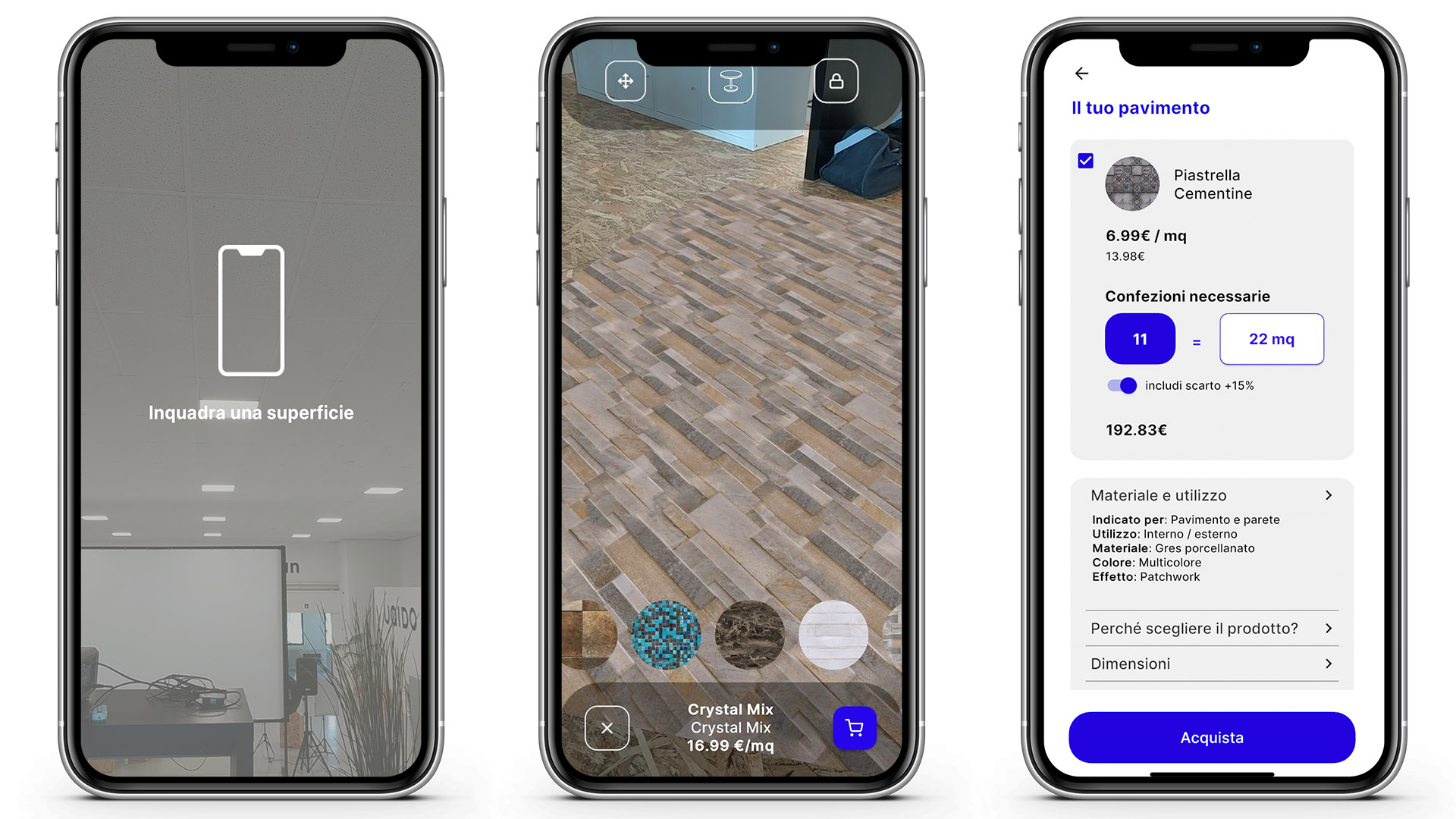
The technological challenge
The milestones on which our attention was focused were:
- the quality of the materials that users can choose and place in the environment;
- occlusion of objects in depth by mapping the environment.
The challenge was to create photorealistic virtual materials starting from photos of the samples of the available surfaces, therefore many materials and many processes that present different peculiarities. The starting images also had to be made in such a way as to allow us to cover surfaces of any extension.
Here are some examples of very different surfaces, some reasonably simpler to extend over the entire surface, others instead present greater difficulties due to much more variable textures:
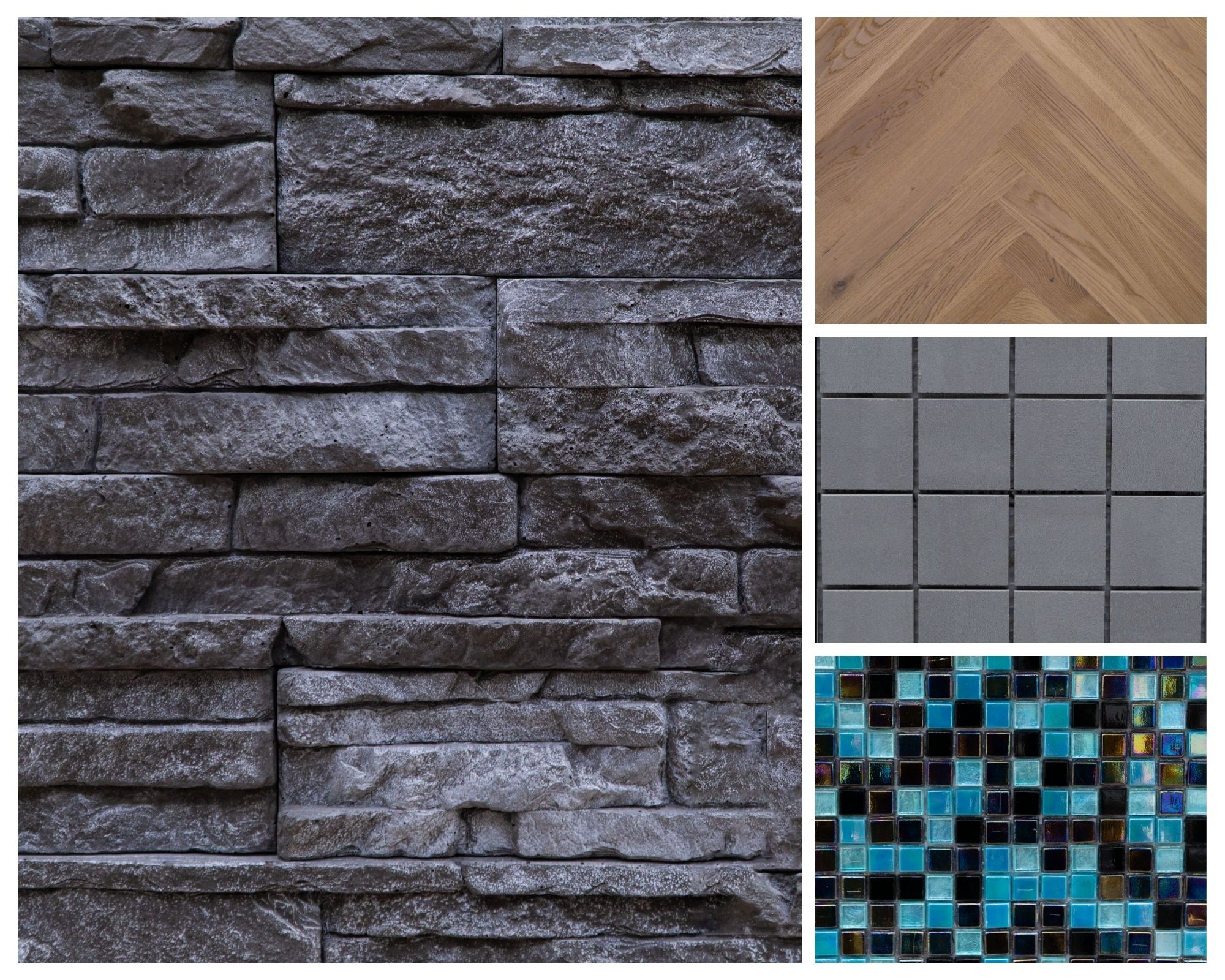 Both Google and Apple are working hard on the occlusion of objects in depth, using the device camera it is in fact possible to recognize and estimate the depth of objects in the surrounding environment. With this information we are able to position Augmented Reality virtual objects in front of or behind a real object, incredibly increasing the realism of the experience.
Both Google and Apple are working hard on the occlusion of objects in depth, using the device camera it is in fact possible to recognize and estimate the depth of objects in the surrounding environment. With this information we are able to position Augmented Reality virtual objects in front of or behind a real object, incredibly increasing the realism of the experience.
We developed the application with Unity3D because it allows us to develop an AR experience for both iOS and Android with high-level APIs.
The materials were instead recreated using Substance Alchemyst, an Adobe software.
Substance Alchemyst has allowed us to start from the basic textures obtained through photos and obtain realistic AR surfaces that can be expanded as desired thanks to an AI that realizes its extension by repeatedly replicating the texture without the need to manual adjustments.
Other layers were then applied to obtain better and better results, to make surfaces homogeneous, for example, reducing shadows.
Measure the effectiveness
To monitor how and how much users use the app, we detect the Analytics directly from the Unity project by receiving information about:
- new app downloads
- active users every day
- active users every month
- total sessions
- sessions per user
- time spent in the app
- cluster of users divided by geographical area and device
- tap number on the ‘Buy’ button
- time elapsed between entering the app and tapping the ‘Buy’ button
Where we arrived? To a new beginning, innovating is a path made of cycles
What we took home in a week of analysis and tests mainly concerns the users’ habits, their answers and some concepts to always keep in mind in contexts characterized by high uncertainty:
- Flooring App users have responded actively, sharing information and feedback through the tools made available to allow us to improve the app;
- before heading to the store, many users visit the Leroy Merlin website and download the app to get more information. Today the user journey begins online, then users bring their expectations to the store: are we ready to manage this?
- it is useful to release a prototype to test and iterate the development instead of investing time and resources in search of a ‘perfect’ and complete tool that did not take into account user feedback.
New technologies allow you to entrust new roles to physical stores but the concept of retail innovation passes from the analysis and understanding of customer expectations. A long and decidedly human learning path, where technology represents only a means and not an end, as evidenced by the Archiva and Pam Panorama projects.
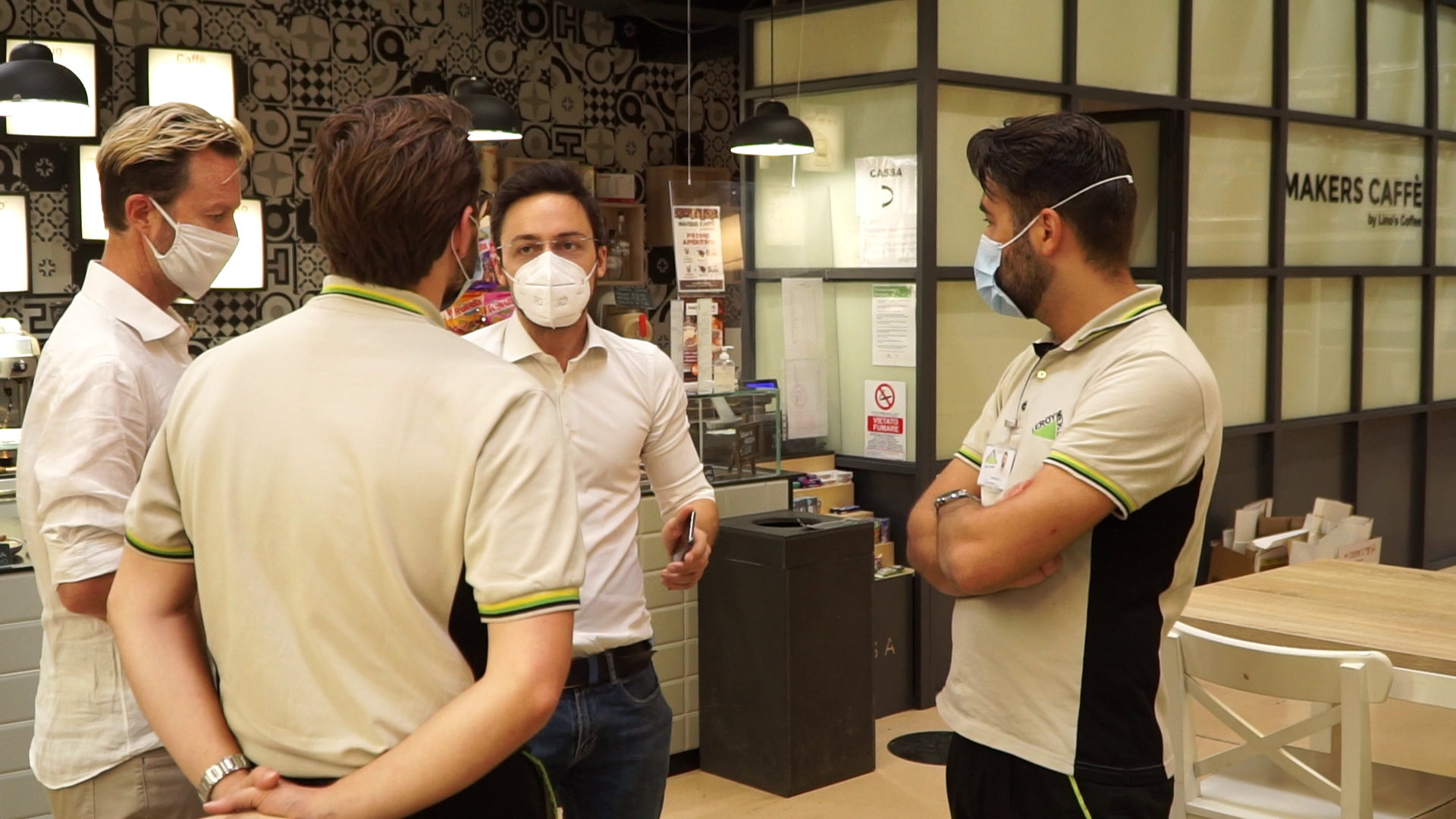
Are you interested in these projects’ insights? We share them with the subscribers to our Exploratorium, find out more about this experimental lab clicking here 👉 https://exploratorium.uqido.com/
WHAT’S EXPLORATORIUM
Exploratorium is Uqido’s laboratory where every week we project, develop and launch on the market a new digital product.
Made of developers, designers and marketing strategists coming from places like IDEO, YCombinator, Sony and M31, our MVP Lab creates and launch every week a new prototype and, with techniques of Growth Hacking, Lean methodologies and Design Sprint, it collects the feedbacks of the market.
